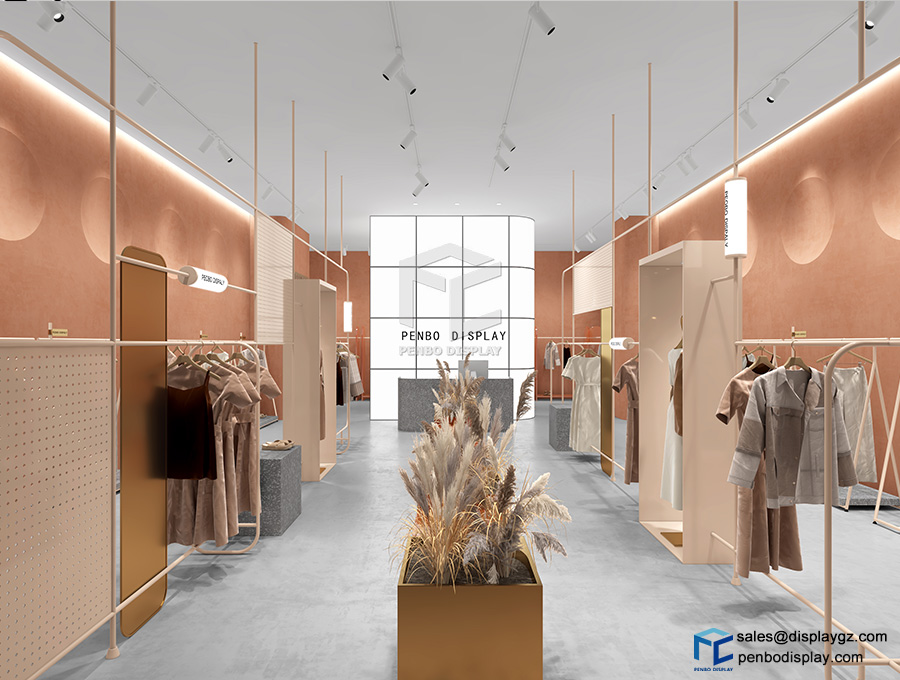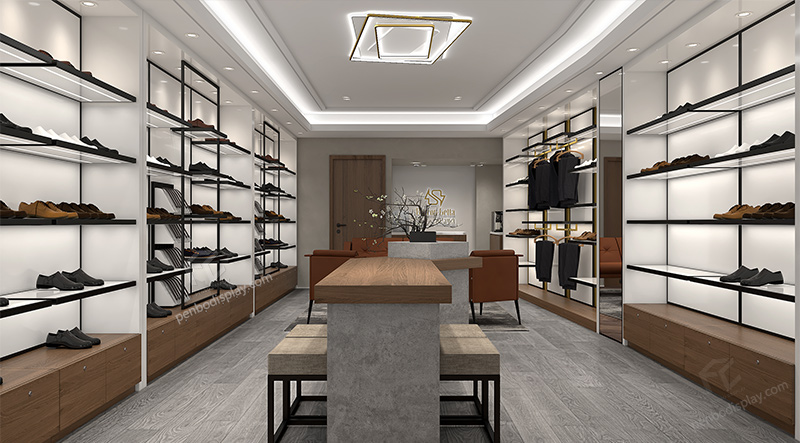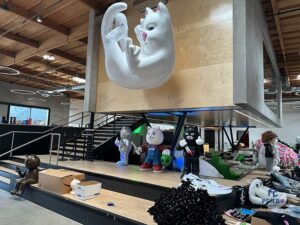
How to Open a Clothing Store in 2024: A Step-by-Step Guide

Building Your Dream Clothing Store
Starting a clothing store is a lucrative and profitable business for anyone who loves fashion and style, and is both exciting and challenging! Whether you’re an aspiring entrepreneur or a seasoned business owner looking to expand, launching a clothing store requires careful planning and execution. In this comprehensive guide, we’ll walk you through the essential steps to ensure your clothing store not only survives but thrives in today’s competitive market.
1. Find Your Niche
The first step to open a clothing store is to decide what kind of clothing you want to sell and who you want to sell it to. Your niche is the specific segment of the market that you will focus on and cater to. For example, you can choose to sell casual, athletic, trendy, or classic clothing, or specialize in a certain category, such as jeans, dresses, shoes, or accessories.
Finding your niche will help you stand out from the crowd and attract loyal customers who share your vision and style. To find your niche, you need to do some market research and identify the gaps and opportunities in the existing clothing market. You can also use your own passion, skills, and experience to guide you. For instance, if you are a skilled seamstress, you can design and make your own clothing, or if you are a visual artist, you can create unique prints and graphics for your clothing.
2. Know Your Audience
The next step to open a clothing store is to understand your target audience and their needs, preferences, and behaviors. Your target audience is the group of people who are most likely to buy your clothing and become loyal customers. Knowing your audience will help you create a product line that resonates with them and a marketing strategy that reaches them effectively.
To know your audience, you need to create a customer profile or persona that describes your ideal customer in detail. You can use demographic, psychographic, and behavioral data to create your customer profile. Some of the questions you can ask are:
- Who are they? (age, gender, income, education, occupation, etc.)
- What are their favorite clothing brands and styles?
- Where do they shop and how often?
- What are their pain points and challenges when it comes to clothing?
- What are their goals and motivations when it comes to clothing?
- How do they make purchasing decisions and what influences them?
You can use various methods to collect data for your customer profile, such as surveys, interviews, focus groups, online reviews, social media, and competitor analysis.
3. Create a Business Plan
A business plan is a document that outlines your goals, strategies, and actions for your clothing store. It helps you organize your ideas, test your assumptions, and communicate your vision to potential investors, partners, and suppliers. A business plan also helps you anticipate and overcome any challenges or risks that you may face along the way.
A typical business plan for a clothing store includes the following sections:
- Executive summary: A brief overview of your clothing store, including your mission, vision, value proposition, goals, and financial projections.
- Company description: A detailed description of your clothing store, including your legal structure, ownership, location, history, and team.
- Market analysis: A comprehensive analysis of your clothing market, including your industry overview, market size, trends, growth, and competition.
- Customer analysis: A thorough analysis of your target audience, including your customer profile, segmentation, and value proposition.
- Product analysis: A clear description of your clothing products, including your product line, features, benefits, pricing, and differentiation.
- Marketing plan: A strategic plan for how you will promote and sell your clothing products, including your marketing objectives, channels, tactics, budget, and metrics.
- Operations plan: A practical plan for how you will run your clothing store, including your operational processes, systems, equipment, inventory, suppliers, and staff.
- Financial plan: A realistic plan for how you will finance and manage your clothing store, including your income statement, balance sheet, cash flow statement, break-even analysis, and funding requirements.
You can use various tools and templates to create your business plan, such as Business Plan Builder or LivePlan.
Related:How Profitable Is a Clothing Store?
4. Secure Funding
To open a clothing store, you will need to secure enough funding to cover your start-up and operating costs. Your start-up costs are the one-time expenses that you will incur to launch your clothing store, such as rent, equipment, inventory, licenses, permits, insurance, branding, and marketing. Your operating costs are the ongoing expenses that you will incur to run your clothing store, such as rent, utilities, payroll, inventory, supplies, marketing, and taxes.
To estimate your start-up and operating costs, you can use a start-up cost calculator or a cash flow forecast. You can also use your business plan and financial plan to project your costs and revenues.
There are various sources of funding that you can explore to finance your clothing store, such as:
- Personal savings: This is the most common and easiest way to fund your clothing store, as you don’t have to pay any interest or give up any equity. However, this also means that you will bear all the risk and responsibility for your business.
- Family and friends: This is another common and easy way to fund your clothing store, as you can get low-interest or interest-free loans or gifts from your relatives and friends. However, this also means that you will have to maintain a good relationship with them and repay them on time.
- Bank loans: This is a traditional and reliable way to fund your clothing store, as you can get a large amount of money from a bank or a credit union at a fixed interest rate and repayment term. However, this also means that you will have to meet the eligibility criteria, provide collateral, and pay back the loan with interest.
- Crowdfunding: This is a modern and popular way to fund your clothing store, as you can raise money from a large number of people online who are interested in your clothing products or brand. However, this also means that you will have to create a compelling campaign, offer rewards, and deliver on your promises.
- Angel investors: This is a lucrative and prestigious way to fund your clothing store, as you can get money from wealthy individuals who are willing to invest in your clothing products or brand in exchange for equity or a share of the profits. However, this also means that you will have to pitch your business idea, give up some control, and report to your investors.
- Venture capitalists: This is a rare and competitive way to fund your clothing store, as you can get money from professional firms who are looking for high-growth and high-return businesses in exchange for equity or a share of the profits. However, this also means that you will have to pitch your business idea, give up a lot of control, and meet high expectations.
You can use various platforms and networks to find and connect with potential funders, such as Kickstarter, Indiegogo, AngelList, or VentureBeat.
5. Choose a Location
One of the most important decisions you will make when opening a clothing store is choosing a location. Your location can have a significant impact on your sales, costs, and customer satisfaction. Therefore, you need to choose a location that is suitable for your niche, audience, and budget.
Some of the factors you need to consider when choosing a location are:
- Foot traffic: You want to choose a location that has a high volume of potential customers who are walking by or visiting nearby businesses, such as malls, shopping centers, or busy streets.
- Accessibility: You want to choose a location that is easy to find and reach for your customers, whether they are driving, biking, or taking public transportation. You also want to ensure that there is enough parking space and signage for your store.
- Competition: You want to choose a location that has a healthy balance of competition and complementation. You don’t want to be too close to other clothing stores that sell similar products or target the same audience, as this may reduce your sales and profits. However, you also don’t want to be too far from other clothing stores that sell different products or target different audiences, as this may increase your exposure and cross-selling opportunities.
- Demographics: You want to choose a location that matches the demographics of your target audience, such as age, income, education, occupation, and lifestyle. You can use tools like [Google My Business] or [Facebook Audience Network] to analyze the demographics of different locations and find the best fit for your store.
- Costs: You want to choose a location that fits your budget and offers a good return on investment. You need to compare the rent, utilities, taxes, insurance, and maintenance costs of different locations and negotiate the best deal for your store.
You can use various methods to find and evaluate potential locations, such as online listings, brokers, referrals, or site visits.
6. Design and Source Your Products
The next step to open a clothing store is to design and source your products. Your products are the core of your clothing store and the main reason why customers will buy from you. Therefore, you need to design and source products that are high-quality, unique, and appealing to your target audience.
There are two main ways to design and source your products: make them yourself or buy them from others.
- Make them yourself: This option is suitable for you if you have the skills, time, and resources to create your own clothing products. This can give you more control, creativity
- Buy them from others: This option is suitable for you if you don’t have the skills, time, or resources to create your own clothing products. This can save you time, money, and hassle, but also limit your control, creativity, and differentiation. You can buy your clothing products from various sources, such as:
- Wholesalers: These are companies that sell large quantities of clothing products at discounted prices. You can buy from wholesalers online or offline, such as [FashionGo], [Wholesale Fashion Square], or [LA Showroom].
- Dropshippers: These are companies that handle the inventory, packaging, and shipping of clothing products for you. You can buy from dropshippers online, such as [Printful], [Spocket], or [Modalyst].
- Manufacturers: These are companies that produce clothing products according to your specifications and requirements. You can buy from manufacturers online or offline, such as [MakersValley], [Alibaba], or [IndiaMart].
When you buy your clothing products from others, you need to consider the quality, price, quantity, variety, and delivery time of the products. You also need to establish a good relationship with your suppliers and negotiate the best terms and conditions for your store.

7. Set Up Your Store
The final step to open a clothing store is to set up your store and make it ready for business. This involves creating a store layout, design, and atmosphere that are attractive, functional, and consistent with your brand identity and image.
Some of the tasks you need to do to set up your store are:
- Install and test your equipment, such as cash registers, security cameras, lighting, music, and Wi-Fi.
- Arrange and display your inventory, such as racks, shelves, mannequins, hangers, and tags.
- Decorate and accessorize your store, such as signs, banners, posters, plants, and art.
- 1. Find a professional apparel store interior interior specialist to help you with store layout planning.
- 2. Find a manufacturer of customizable apparel store display fixtures, an environmentally pleasing interior is the first step to success
- Hire and train your staff, such as managers, sales associates, cashiers, and cleaners.
- Obtain and comply with all the necessary licenses, permits, and regulations, such as sales tax, health and safety, and zoning.
- Launch and promote your grand opening, such as flyers, coupons, social media, and press releases.
You can use various tools and resources to help you set up your store, such as [Shopify POS], [Square], or [Vend].
Conclusion
Opening a clothing store can be a fun and fulfilling way to express your passion for fashion and style. However, it also requires a lot of planning, research, and hard work to succeed in the competitive apparel industry. By following the steps in this guide, you can open a clothing store that is profitable, sustainable, and enjoyable. We hope you found this article helpful and informative. If you have any questions or comments, please feel free to contact us. Thank you for reading and good luck with your clothing store!
Share:
Table of Contents
Shop Fixtures Manufacturer
We are a manufacturer of display products established in 1995 in Guangzhou, China. We specialize in a wide range of retail store fixtures,including display case,showcase,racks,counters,stands , etc. Providing customers with one-stop merchandising solutions.
Recent Posts
Subscribe to Newsletter
Get all the latest information on shop design ideas, sales and offers. Subscribe to the newsletter:
Subscribe to Newsletter
Get all the latest information on shop design ideas, sales and offers. Subscribe to the newsletter:


